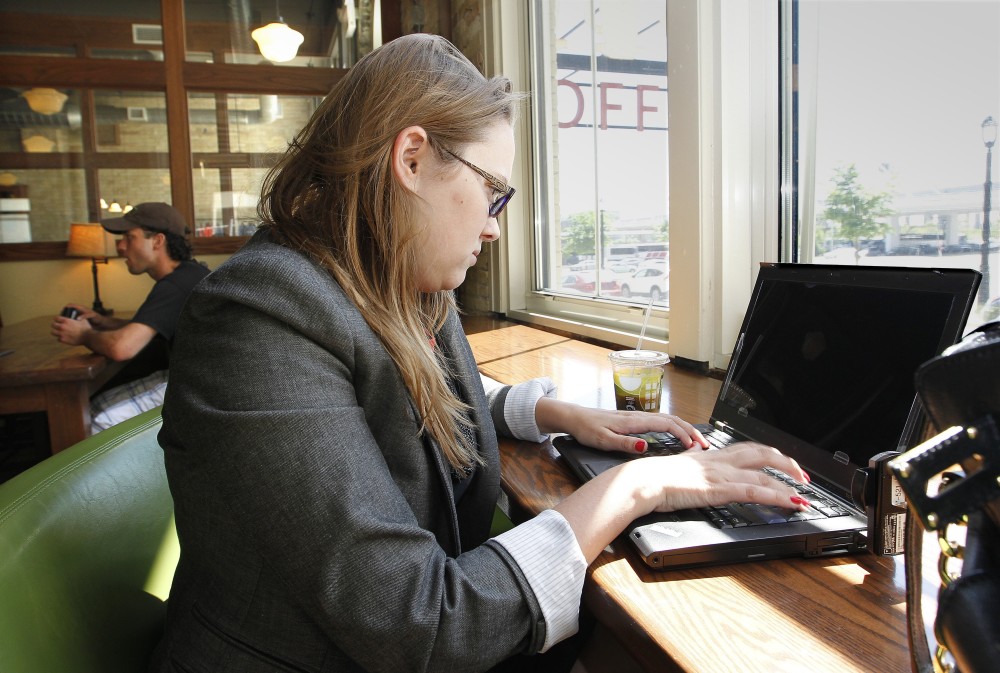By Cindy Krischer Goodman
Miami Herald.
A few days ago, my son was driving me to the mall and telling me about his college experiences while I was responding to a work email on my iPhone. “Just one minute,” I told him. Of course, he knew it would take me more than a minute.
As much as we love our smartphones and mobile devices, it’s hard to deny how much attention they demand. In 2015, we found ourselves torn between embracing our devices as powerful tools to work and communicate and letting them dictate our lives. As entrepreneur Jessica Kizorek has noted: Tech addiction is tough to define because “everybody’s doing it.”
Periodically in 2015, I addressed how the 24/7 expectations created by our addiction to devices left us feeling stressed, exhausted and less satisfied with our jobs. Yet, there are some notable ways technology helps with work-life balance. Here are some of the trends I detailed in my Balancing Act columns in 2015.
-Romance. In the digital age, the concept of romance has evolved to adapt to our complicated work and home lives. While some people question whether technology gets in the way of real romance, some believe the opposite is true.
In between drafting real estate contracts or meeting with clients, attorney Barry Lapides zips off a romantic text to his wife of eight years that reads: “I’m so lucky to have you in my life.” Lapidus noted in a February column: “A text takes five seconds to send and it allows us to connect as a couple throughout the day.” Relationship coach Maya Ezratti added: “Communicating electronically is not a replacement for face to face, but it can be an enhancement.”
-Inboxes. From software to mobile applications, new innovations are rolling out to change our experiences with email and help us create the boundaries and priorities that we are struggling to set on our own. In February, I wrote that companies such as IBM, Microsoft and Google are studying our behaviors to develop tools and email features to help us be more efficient. The technology companies are looking at how analytics and algorithms can sort our email and figure out what we should, or shouldn’t, be giving priority.
Alan Lepofsky, vice president and principal analyst of Constellation Research in Toronto, says most of us are so overwhelmed by incoming messages that we can’t process what we need to do first. “We need tools to aggregate information and help us decide what we should be working on based on our own actions.”
-Leadership training. In April, I wrote about how technology now allows us to better fit workplace training into our work-life balance. The traditional training models of all-day workshops are being replaced by apps, games, simulations and podcasts to better fit workers’ needs. Some employers are tapping into the explosion of educational technology and online courses and aggregating options through portals they are pushing out to employees.
A good learning culture empowers employees to continuously become better at their jobs, explains Allison Rossett, emeritus professor of educational technology at San Diego State University. Increasingly, that learning now is “on demand, personalized and mobile,” she says.
-Motherhood. In October, I explored how technology is changing motherhood by redefining the concept of a stay-at-home mom. By embracing technology, millennial mothers are almost all earning income, even while home with their children. These young moms take risks, aren’t afraid of failure and find financial opportunity in areas prior generations overlooked, according to Maria Bailey, author of the newly released book “Millennial Moms: 202 Facts Marketers Need to Know to Build Brands and Drive Sales.”
From home, millennial moms sell products and services through social media. They work remotely as contractors or contributors for former employers. They take risks on ventures, even when loaded with student debt. Subsequently, they are proving to be a trove for businesses. “Businesses need these women who know how to build online relationships and understand the way Millennials are communicating with each other,” Bailey says.
-Flexibility. Our devices make it easy to work from our homes instead of spending late nights toiling in the office. Of course, our new work pattern now makes knowing how to unplug as valuable as knowing how to plug in. In a December column, I passed on advice shared by David Greenfield, director of The Center for Internet and Technology Addiction in Connecticut. Greenfield says that if you think you are spending 15 minutes online, you likely really are spending 10 times that, or as much as 150 minutes. “We need more conscious self-awareness of our technology use,” he says. Greenfield suggests we reclaim balance through tech breaks and push through the initial discomfort when we power-down. “If you can tolerate the discomfort, the next time it gets easier.”
The devices that make it seductively simple to work outside of business hours will only get more sophisticated. Let’s make 2016 the year we use them to help us with our work-life balance.
___
ABOUT THE WRITER
Cindy Krischer Goodman is CEO of BalanceGal LLC, a provider of news and advice on how to balance work and life.














































































































































































































































































































































































